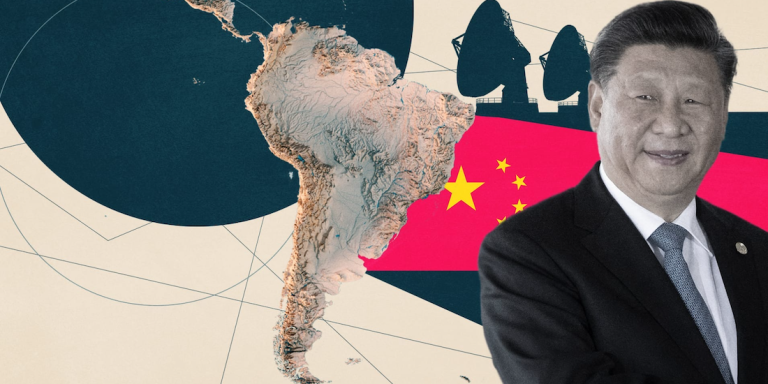
Economic Partnerships and Diplomatic Shifts Redefine Hemispheric Dynamics as Beijing Expands Its Foothold Across the Region
New York, N.Y. — For decades, Latin America stood firmly within the sphere of U.S. influence, often termed America’s “backyard” in diplomatic circles.
Today, that historical framework is unraveling as China executes a deliberate and resource-backed strategy to expand its political, economic, and diplomatic footprint across the region. This recalibration represents more than fleeting alliances; it signifies a profound geopolitical realignment with lasting implications for hemispheric relations and U.S. strategic interests.
China’s Calculated Advance
China’s inroads stem from a multifaceted campaign centered on trade expansion, infrastructure investment, and diplomatic engagement.
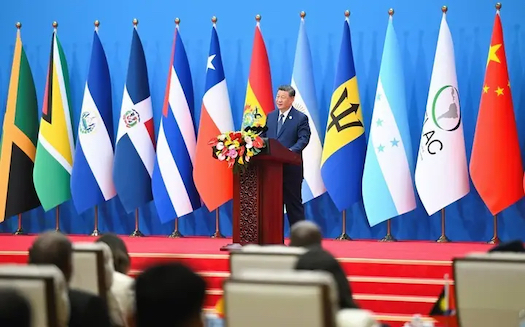
Unlike the U.S.’s periodic focus, often tied to security concerns or fluctuating political priorities, Beijing offers a consistent alternative: long-term loans without governance conditions, major ports, roads and energy projects under the Belt and Road Initiative (B.R.I.), and high-level state visits emphasizing mutual growth.
This reliability fosters goodwill among regional governments seeking development capital without Washington Consensus-style reforms.
Trade figures underscore this shift. China has surpassed the U.S. as the top trading partner for Brazil, Chile, Peru, and Uruguay, with others likely to follow.
This commercial leverage translates into diplomatic influence, enabling Beijing to secure support in multilateral forums and advance recognition of its geopolitical positions.
Critically, China frames its engagement through South-South cooperation rhetoric—positioning itself as a fellow developing nation—contrasting sharply with perceived U.S. paternalism.
Why Latin America Is Pivoting
The region’s receptiveness isn’t accidental. Persistent frustrations shape it:
- Economic Diversification Needs: Nations seek alternatives to U.S.-centric markets and investment. Chinese demand for soybeans, copper, lithium, and oil provides crucial revenue.
- Policy Autonomy: Leaders like Mexico’s López Obrador or Brazil’s Lula prioritize sovereignty. China’s “non-interference” stance aligns better than U.S. positions on issues like drug policy or Venezuela.
- Infrastructure Gaps: From Argentina’s dams to Jamaica’s highways, Chinese financing addresses urgent development needs where U.S. offers are limited or tied to transparency demands many find cumbersome.
Professor Jorge Heine notes this represents a rejection of “Monroism,” where Latin America passively accepted U.S. primacy. Instead, nations actively diversify partnerships, viewing China as a counterweight ensuring greater agency.
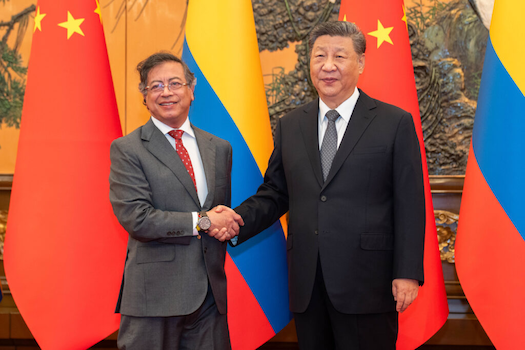
Consequences for U.S. Interests
Washington’s waning influence carries tangible risks:
- Economic Disadvantage: U.S. exporters face stiffer competition as free trade agreements like the D.-R.-C.A.F.T.A. lose relative importance. Chinese firms dominate renewable energy and tech investments.
- Diplomatic Erosion: Support for U.S.-led initiatives wanes. Nations abstain from condemning Russia or China in the U.N., complicating multilateral efforts.
- Security Complications: Reduced intelligence cooperation hinders counternarcotics and migration management. Chinese-built ports raise dual-use concerns among Pentagon strategists.
The perception of neglect exacerbates these issues. While U.S. attention pivots to Asia or Europe, Latin leaders note inconsistent high-level engagement—contrasted by constant Chinese ministerial visits.
Reclaiming Partnership: A Path Forward
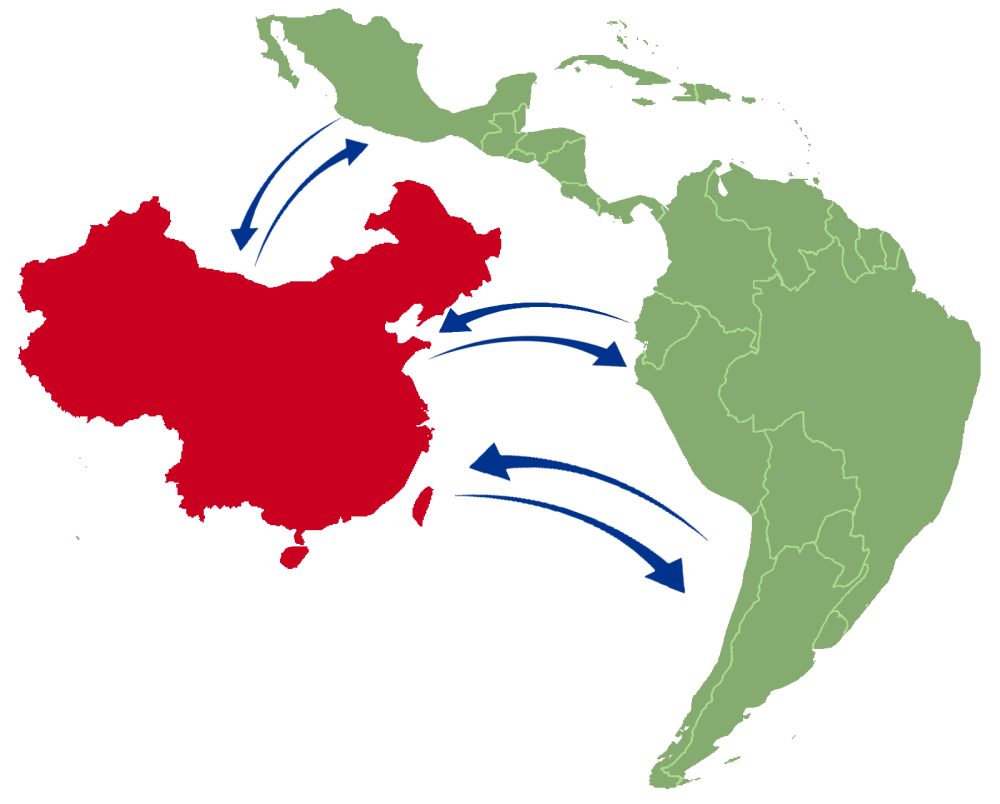
Reversing this trend requires more than reasserting dominance; it demands reimagining engagement:
- Match Economic Flexibility: Offer alternative financing via the Inter-American Development Bank or new climate funds without rigid neoliberal conditions. Prioritize nearshoring incentives.
- Elevate Multilateralism: Treat C.E.L.A.C. and other regional bodies as equals. Shift from directive to collaborative agendas on migration, crime, and climate.
- Leverage Shared Ties: Collaborate via diaspora communities, university exchanges, and tech hubs. Emphasize democratic values without moralizing.
- Accept Multipolarity: Acknowledge Latin America’s right to diverse partners while competing through superior transparency, labor standards, and sustainability.
The U.S. retains advantages—deep cultural ties, geographic proximity, and shared democratic traditions. Success hinges on respecting agency, not invoking outdated “backyard” mentalities.
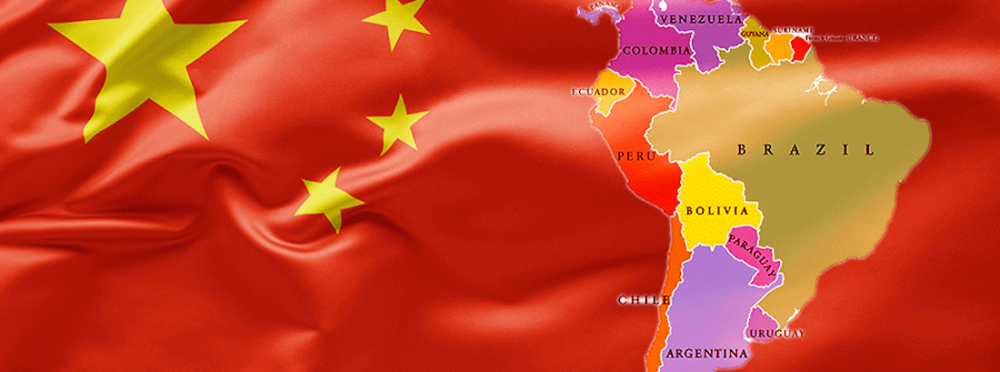
Audio Summary (75 words)
“Latin America is diversifying its global ties, with China filling gaps left by inconsistent U.S. engagement. Through trade, loans, and diplomacy, Beijing presents an alternative vision. This shift challenges U.S. economic and strategic interests. Reversing it requires Washington to offer flexible partnerships, respect regional autonomy, and invest consistently—moving beyond historical dominance toward cooperative engagement in a multipolar hemisphere.